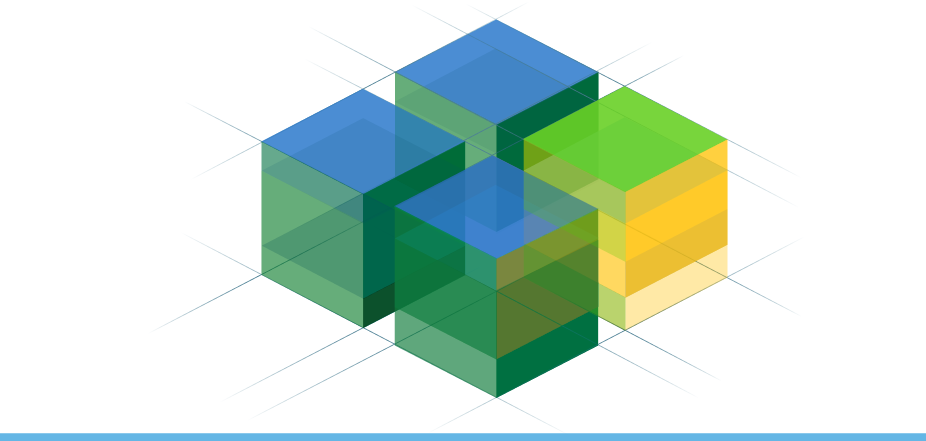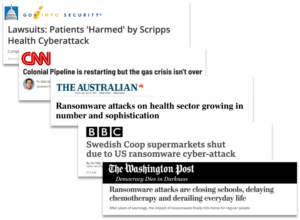tip·ping point
noun
1. the point at which a series of small changes or incidents becomes significant enough to cause a larger, more important change.
The annual Gartner Magic Quadrant for Enterprise Backup and Recovery Software Solutions just published. And, while I have said over and over again that there is very little about this year (in general!) that is typical, I believe this Magic Quadrant signals the beginning of a tectonic shift in our industry — a shift from legacy backup to an age of next-gen data management. A tipping point you might say.
Why? Well, in part, because we — the consumers — have reached a tipping point when it comes to ransomware. Just take a look at a few headlines in the US in the months of May and June.
That’s just the beginning. According to recent reports, a handful of “nefarious gangs” have collectively compromised nearly 300 “new victim organizations[1]” from January through April 2021. Other reports estimate that global damage is predicted to be $20B[2] — and not from the ransomware costs (those are going down), but from closed businesses, people out of work, lost revenue and lost consumer trust.
Legacy Is Not Architected to Keep Pace
In the face of this onslaught of high-profile attacks, consumers are fed up. And boards and CEOs are asking why their IT organizations can’t recover with their current backup products. I believe the fundamental reason is that legacy 10+ year old backup architectures were not designed to deal with today’s modern threats, or designed to rapidly recover, especially at scale. In fact, we often hear from new and existing Cohesity customers that many legacy players can’t even meet their backup SLAs anymore. So while there is no silver bullet to solve the ransomware crisis, clearly in the area of rapid recovery, we would argue — based on what we’re seeing in the MQ, and hearing from customers — that legacy backup has failed.
Failed to protect customer data.
Failed to keep businesses operating.
Failed to keep supply chains running.
And so it makes sense that companies are looking for innovative approaches to get in front of this crisis. Gartner made astute observations on ransomware in the Magic Quadrant report, stating: “…The move towards public cloud, heightened concerns over ransomware along with complexities associated with backup and data management are forcing I&O leaders to rearchitect their backup infrastructure and explore alternative solutions.”
In addition to shining a spotlight on ransomware, I believe there are other big takeaways from this year’s Magic Quadrant.
The Market Is Consolidating and Legacy Is Fading
From our vantage point, it’s clear that we’re seeing notable movement downward — or per our understanding even out of the Leaders quadrant — for some vendors that I’d fully categorize as “legacy” players. And I also think it’s clear that next-gen data management vendors, including Cohesity, are continuing to be recognized as Magic Quadrant Leaders.
It’s a Backup and Recovery Magic Quadrant, However We Are Seeing a Shift Towards Data Management
While Gartner clearly calls out that this is an enterprise backup and recovery Magic Quadrant, I think it’s evident they are seeing the transition based on data points that are called out in the report. For example, Gartner referenced our data management platform, Cohesity Helios. Helios is a multi-cloud platform that provides unified data management across the data center, edge, public clouds, and now, across Cohesity-managed SaaS environments. Helios offers a modern, next-gen, radically simplified approach to data management. We believe recognizing Helios in the report, again, speaks to the shift that’s happening in the market. It’s no longer just about backup, it’s way bigger than that.
And, There Is One Other Takeaway That I’d Like to Note: the Growing Importance of Delivering Backup as a Service
We’re all consumers and used to frictionless delivery of services. And this is as true in IT as it is in so many other industries. So notably for the first time in the market definition/description section of the Magic Quadrant this year, we believe Gartner highlights that many of the solutions they are reviewing can also be offered as a vendor managed service, or SaaS.
We’re pleased to see our BaaS offering, Cohesity DataProtect delivered as a Service, recognized in the report.
The Road Beyond
I think the Magic Quadrant this year, more than ever, is a mirror into what’s going on in our world and why backup and recovery — and next-gen data management — play a more critical role than ever. This industry used to just focus on data protection — that insurance policy that no one wanted to talk about but everyone knew they had to have. Now, it’s about so much more — it’s about defending and rapidly recovering from ransomware attacks; it’s about actually making data easier to manage — where scalability and choice are key; and, it’s about deriving value from all that data.
I’ve seen multiple tipping points across multiple industries during my career. But, this may be one of the most exciting tipping points yet!
[1] Esentire report, https://www.esentire.com/resources/library/six-ransomware-gangs-claim-290-new-victims-in-2021-potentially-reaping-45-million-for-the-hackers
[2] Cybersecurity Ventures, https://cybersecurityventures.com/global-ransomware-damage-costs-predicted-to-reach-20-billion-usd-by-2021
Gartner, Magic Quadrant for Enterprise Backup and Recovery Software Solutions, Santhosh Rao, Nik Simpson, Michael Hoeck, Jerry Rozeman, 19 July 2021
Gartner does not endorse any vendor, product or service depicted in its research publications, and does not advise technology users to select only those vendors with the highest ratings or other designation. Gartner research publications consist of the opinions of Gartner’s research organization and should not be construed as statements of fact. Gartner disclaims all warranties, expressed or implied, with respect to this research, including any warranties of merchantability or fitness for a particular purpose.
Gartner and Magic Quadrant are registered trademarks of Gartner, Inc. and/or its affiliates in the U.S. and internationally and is used herein with permission. All rights reserved

















